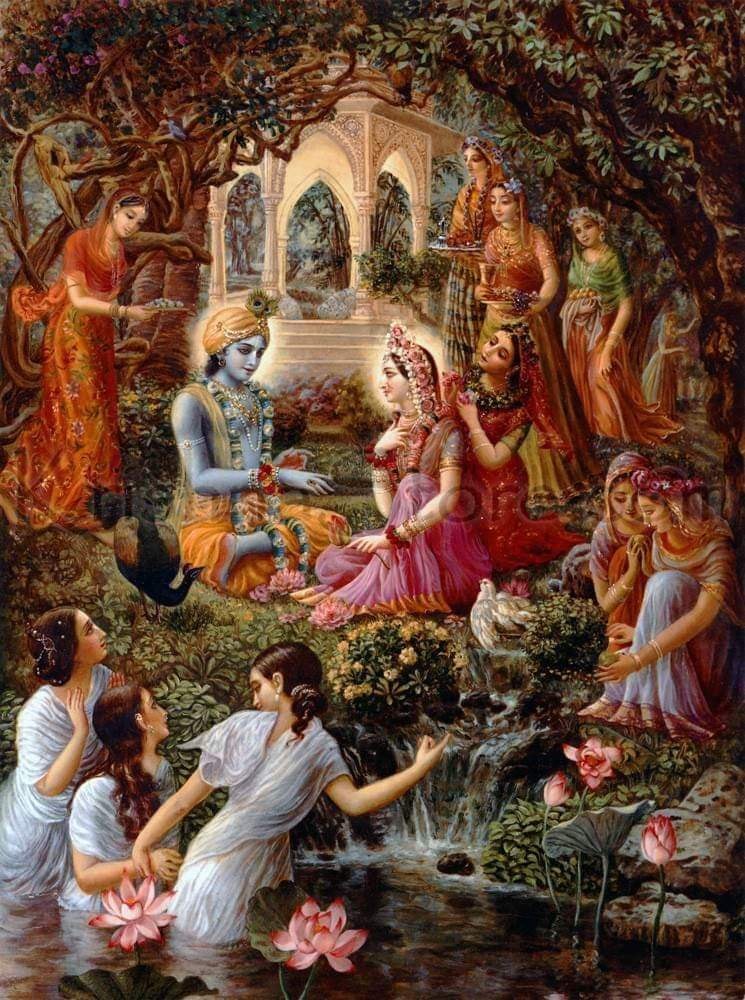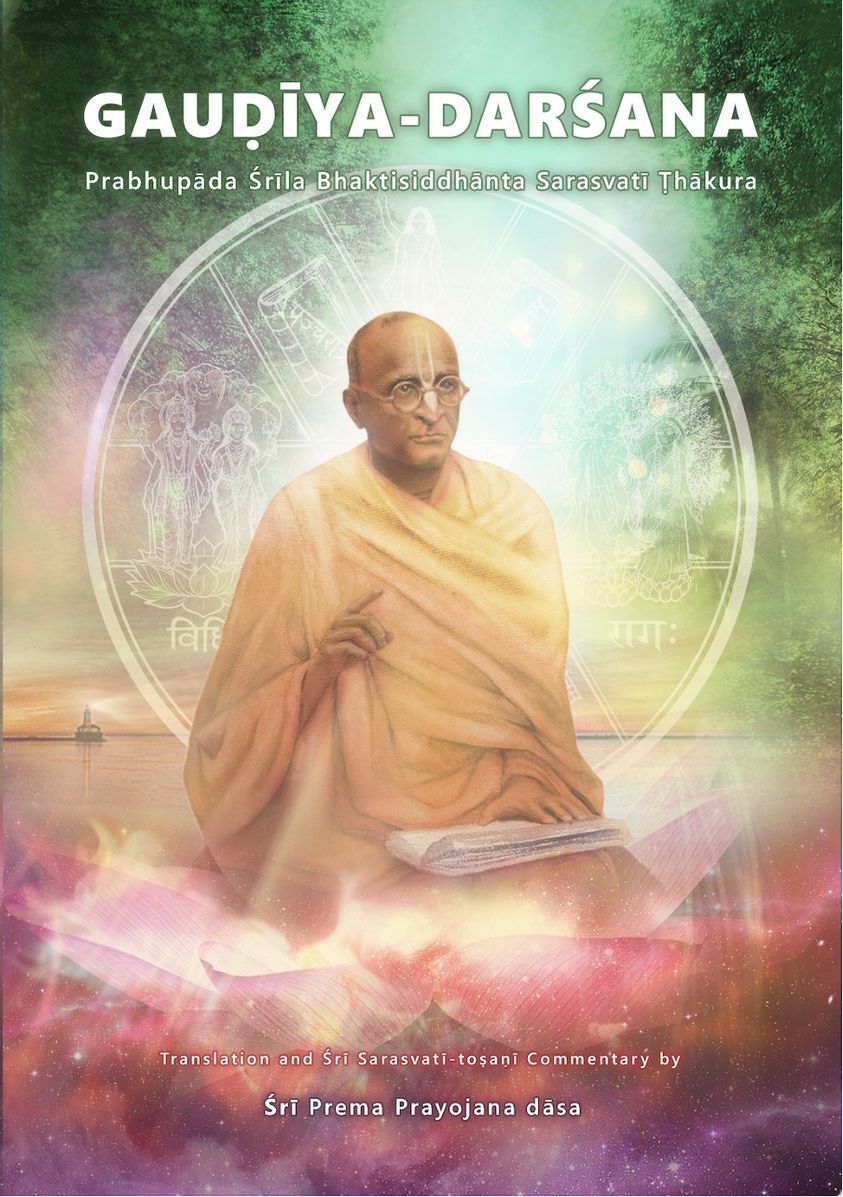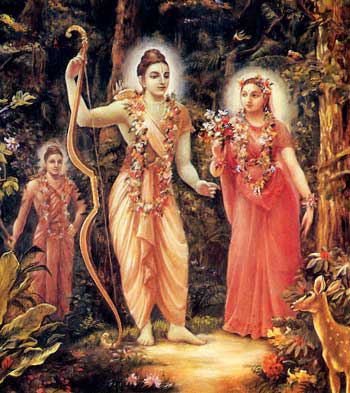
Today is the appearance day of Jāhnavā-mātā, Lord Nityānanda’s consort (Nityānanda-śakti). It is also the appearance day of Sītā-devī, the consort of Lord Rāmacandra. The following is an excerpt from a bhāva anuvāda of the kathā given by Śrīla Bhakti Vijñāna Bhāratī Gosvāmī Mahārāja on the same tithi on May 8, 2014 and May 5, 2017.
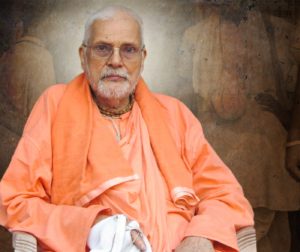
Śrīla Bhakti Vijñāna Bhāratī Gosvāmī Mahārāja
REASON FOR SĪTĀ DEVĪ’S ADVENT
Why did Sītā-devī appear in this world? It was to eradicate the mighty and indomitable ascetics who could not be defeated by anyone else [except Bhagavān]. Sītā-devī performed Her appearance pastimes for the welfare of the whole world.
[In her previous birth] She was the daughter of a boundlessly effulgent and topmost brāhmaṇa sage Kuśadhvaja [the son of Bṛhaspati]. Kuśadhvaja named her Vedavatī, meaning ‘the embodiment of the Vedas’ [as Kuśadhvaja was always engrossed in studying and reciting the Vedas]. She was a vāgmayi kanyā; that is to say, she was born by the mere utterance of words.
[Later, seeing the young Vedavatī’s unprecedented beauty] Rāvaṇa desired to marry Vedavatī however she flatly refused the proposal, saying, “I will only accept Viṣṇu as my husband and not any conditioned soul.” Infuriated upon being rejected, Rāvaṇa grabbed her by the hair. Greatly angered in turn, she immediately cut off her hair, but restrained herself from cursing him as she would have lost the merit she had accrued by dint of her penances. Instead, she announced – “If indeed I have performed austerities, pious deeds, charities, fire sacrifices and the likes in this birth, I will appear as a chaste woman in my next birth. [And become the cause of your destruction.]” Saying this, she immolated herself [as she felt her chastity was sullied by Rāvaṇa].
In Her next birth, She was discovered in a furrow in the earth, by King Janaka, who adopted Her. That is why She was bestowed the name Sītā (which means ‘furrow’ in Sanskrit). [King Janaka was Her foster father.] Thus She came to be known as Janaka-nandinī Sītā. In another kalpa, She was discovered on a lotus flower.
BEYOND THE JURISDICTION OF MATERIALISTS
In reality, can Rāvaṇa ever abduct Sītā-devī? When Rāvaṇa tried to abduct Her, the original Sītā-devī took shelter of Agni, the fire-god, while Rāvaṇa could only lay hands on the illusory material form of Sītā (Chāyā-sitā).
The scriptures affirm –
ataḥ śrī-kṛṣṇa-nāmādi
na bhaved grāhyam indriyaiḥ
sevonmukhe hi jihvādau
svayam eva sphuraty adaḥ
(Bhakti-rasāmṛta-sindhu 1.2.234)
“No one can understand Kṛṣṇa as He is, by the blunt material senses. But He reveals Himself to the devotees, being pleased with them for their transcendental loving service unto Him.”
[Sītā-devī is Bhagavān’s internal potency,] which can never be comprehended through materially contaminated senses. How then can someone like Rāvaṇa attain the eligibility to touch Her or abduct Her?
Sītā-devī is the energy of Bhagavān Śrī Rāma. Energy and the possessor of the Energy are the same, non-different. Śakti-śaktimator abhedaḥ: ‘There is no difference between the potency and the possessor of potency.’
Eventually when Śrī Rāma rescued Sītā-devī, He got Her to perform Agni-parīkṣā [A test wherein She had to enter fire to prove Her purity]. At that time, the fire-god returned the real Sītā who he had protected and retained before. And the illusory material form of Sītā remained in the custody of Agni-deva.
STORY OF RĀMADĀSA VIPRA
In South India, there lived a devotee of Śrī Rāma named Rāmadāsa Vipra. Hearing that Rāvaṇa had abducted Sītā–devī, the mother of the universe, he had stopped taking food. He invited Caitanya Mahāprabhu to his home, but did not cook anything as he was absorbed in the thoughts that when Lakṣamaṇa brings leafy greens, roots and fruits from the forest then I will cook [under the inspiration of Sītā–devī (Caitanya-caritāmṛta, Madhya, 9.183)]. He was absorbed in such a mood. He was known as Rāma-japī; he would chant the holy name of Lord Rāma. [Mahāprabhu assured him that Rāvaṇa could not ever lay hands on the real Sītā.] Later when Caitanya Mahāprabhu brought evidence from the Kūrma Purāṇa [which confirmed that Rāvaṇa had taken only Chāyā-sitā and not the real Sītā], Rāmadāsa Vipra was ecstatic.
So on this day of Her appearance, we pray for Her mercy that we attain devotion to the Supreme Lord. She can grant us that devotion.
APPEARANCE OF JĀHNAVĀ MĀTĀ
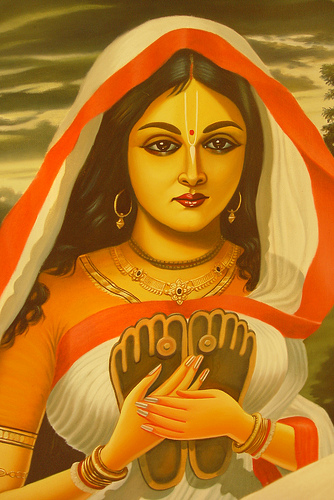
Today is also the appearance day of Jāhnavā Mātā. She is Nityānanda’s śakti, the divine potency of Nityānanda. Accepting Sūryadāsa Paṇḍita as her father, she appeared in Kālnā. Jāhnavā is Revatī in kṛṣṇa-līlā and her sister Vasudhā is Varuṇī. [Endnote 1] Both sisters were married to Nityānanda Prabhu and both are Nityānanda’s śakti. They are also mentioned in vaiṣṇava-vandanā – ‘vasudhā jāhnavā vando dui ṭhākurānī’.
A GUIDE TO ALL
Jāhnavā Mātā was exceedingly courageous and her glories are limitless. After the disappearance of Nityānanda Prabhu, she became the revered guide to all the Vaiṣṇavas of Gauḍa-maṇḍala, Kṣetra-maṇḍala and Vraja-maṇḍala. They would look up to her for direction to resolve all their dilemmas and act as per her instructions.
KHETURĪ FESTIVAL CONDUCTED UNDER HER AUSPICES
Once, following a dream, Narottama Dāsa Ṭhākura went to an abandoned granary belonging to a brāhmaṇa and asked for permission to access it. Despite being forewarned that nobody dared to venture there as the place was infested with many poisonous serpents, Narottama affirmed that he didn’t mind. When he went in, he was not harmed by any snake. There, he discovered six Deities who were actually being guarded by those poisonous serpents. [The six Deities discovered were: Śrī Gaurāṅga-deva, Śrī Vallabhī-kānta, Śrī Vraja-mohana, Śrī Rādhā-kānta, Śrī Rādhā-ramaṇa and Śrī Kṛṣṇa.]
When Narottama then turned to Jāhnavā Mātā for guidance, she instructed, “These deities are self-manifest and hence no formal installation [prāṇa-pratiṣṭhā] is necessary. Only mahā-abhiṣeka need be performed. Invite Śrīnivāsa Ācārya to perform the mahā-abhiṣeka, while Śyāmānanda, Rāmacandra Kavirāja and you take up the service of performing kīrtana. Invite all the Vaiṣṇavas in and around Gauḍa-maṇḍala, Kṣetra-maṇḍala and Vraja-maṇḍala, and befittingly arrange for everything.”
Although Narottama Dāsa was a prince, he had bequeathed his throne to his cousin Santoṣa. So it was King Santoṣa, who made all the arrangements for the grand festival, including prasāda sevā and befitting accommodation to all the Vaiṣṇavas. Jāhnavā Mātā who is Annapūrṇā [One who provides nectar-like food and nourishing care to the body and soul] herself took up the responsibility of preparing the entire bhoga for the Deities. Being Annapūrṇā, just by her overseeing everything, there would be no scarcity. Under the auspices of Jāhnavā Mātā, all the great Vaiṣṇavas were seen off in a befitting manner by King Santoṣa.
A MANIFESTATION OF OPULENCE
Once when Jāhnavā Mātā was engrossed in rolling lucīs [deep fried Indian breads (purīs) made from refined flour] for Ṭhākurajī’s offerings, Vīrabhadra, the son of Nityānanda Prabhu, suddenly arrived in the kitchen. Since it was culturally fitting to always keep the head covered [with the loose end of the sārī] especially in front of men, upon finding both her hands engaged in sevā, she spontaneously manifested another hand to pull the veil over her head. Witnessing this, Vīrabhadra [who became awe-struck] took shelter of her lotus feet and became her disciple.
PASTIMES IN VṚNDĀVANA
Jāhnavā Mātā had a very divine presence. After the ceremony at Kheturī, Jāhnavā Mātā left for Vṛndāvana and on the way she delivered, many devious people, who although initially addressed her as a brāhmaṇa’s widow, later upon witnessing her potency, became her disciples.
The Deity of Śrīmatīi Rādhārāṇī in Gopīnātha Mandira was offered by Jāhnavā Mātā. And in Khardāha, she manifested the Deity of Śrī Kṛṣṇa-rāya. She also established a Deity of Mahāprabhu and initiated daily worship of these Deities. At Rādhā kuṇḍa, the place where Jāhnavā Mātā used to bathe, eventually came to be known as Jāhnavā Ghāṭa. [There is also a small shrine in honor of her sitting place at Rādhā-kuṇḍa called Jāhnavā Mā Baiṭhaka] Those who perform parikramā under the guidance of advanced Vaiṣṇavas can see it there.
Today is the appearance day of Jāhnavā Mātā and Sītā-devī. They are not conditioned souls like us. They appear in this world only for the welfare of all.
ENDNOTE 1:
From Gaura-gaṇoddeśa-dīpikā 65 & 66 (bvml.org) –
65. Lord Balarāma’s two wives, Śrīmatī Varuṇī-devī and Śrīmatī Revatī-devī, appeared during Lord Caitanya’s pastimes as Śrīmatī Vasudhā-devī and Śrīmatī Jāhnavā-devī, the two dear wives of Lord Nityānanda, and the daughters of the great personality Śrī Sūryadāsa. Their father, Sūryadāsa, had previously been Mahārāja Kakudmi. His bodily luster made him as effulgent as the sun.
66. Some say that Śrīmatī Vasudhā-devī is the incarnation of Śrīmatī Anaṅga-mañjari, and others say that Śrīmatī Jāhnavā-devī is the incarnation of Śrīmatī Anaṅga-mañjarī. In truth, both opinions are correct. They are both incarnations of Śrīmatī Anaṅga-mañjarī.
|
Buy me a herbal tea i mean 🙂 |

 Posted in
Posted in 






